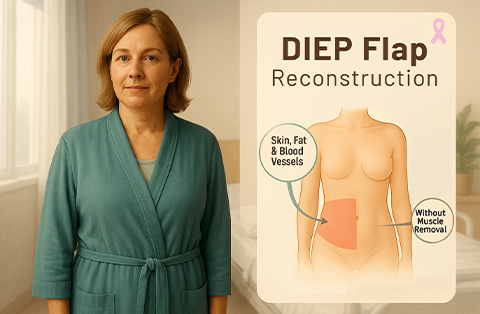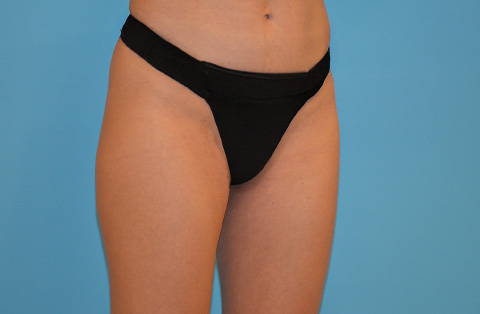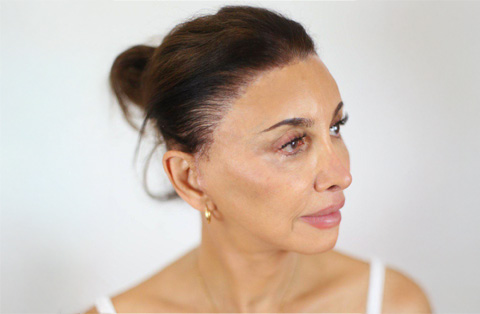Struggling with dry, irritated eyes? Learn what causes dry eye syndrome and discover proven treatments to relieve symptoms, protect your vision, and restore long-term eye comfort.
Dry eye syndrome is a common condition where your eyes don’t produce enough tears, or the tears evaporate too quickly. This leads to irritation, blurred vision, and discomfort.
It affects millions of people worldwide, especially adults over 50 and those who spend long hours on screens. If left untreated, dry eye can impact daily activities and even cause damage to the eye surface.
In this guide, you’ll learn what causes dry eye, how to recognize symptoms, and the most effective treatments for long-term relief and healthier eyes.
What is dry eye syndrome?
Dry eye syndrome is a common condition where the eyes don’t produce enough tears or the tears evaporate too quickly. As a result, the surface of the eye becomes dry, irritated, and inflamed. This condition is also known as dry eye disease or keratoconjunctivitis sicca.
Tears are essential for eye health. They keep the surface of the eye smooth, wash away particles, and protect against infection. When the tear film becomes unstable or insufficient, it leads to dryness, discomfort, and sometimes blurred vision.
Dry eye syndrome can affect one or both eyes. It ranges from mild, occasional dryness to a chronic condition that significantly impacts daily life. While it’s more common with age, especially in women, it can affect anyone at any stage of life.
This is a long-term condition. Most people manage it well with proper treatment and consistent care, but early diagnosis is key to preventing complications like corneal damage or vision changes.
What are the causes of dry eyes?
Dry eyes happen when there’s a problem with the tear film, the thin layer that covers and protects the surface of your eyes. This film has three components: oil, water, and mucus. If any of these layers are disrupted, it can lead to increased tear evaporation or insufficient tear production.
The causes of dry eye fall into two main categories:
1. Decreased tear production (Aqueous-deficient dry eye)
Your eyes may not produce enough of the watery component of tears. This can result from:
Aging: Tear production naturally declines with age.
Hormonal changes: Especially during menopause or pregnancy.
Certain medications: Including antihistamines, antidepressants, blood pressure drugs, and diuretics.
Autoimmune conditions: Such as Sjögren’s syndrome, rheumatoid arthritis, or lupus.
Nerve damage: From eye surgery or contact lens use can affect tear gland function.
2. Increased tear evaporation (Evaporative dry eye)
Your eyes may produce enough tears, but they evaporate too quickly due to:
Meibomian gland dysfunction (MGD): When the oil glands in your eyelids become blocked or inflamed.
Environmental factors: Wind, dry air, air conditioning, and screen use reduce blink frequency and increase evaporation.
Contact lens wear: Can destabilize the tear film over time.
Allergies or eye infections: Can inflame the ocular surface and worsen dryness.
Some people experience mixed dry eye, where both production and evaporation are affected. Identifying the root cause is essential for selecting the right treatment strategy.
Can eye surgeries cause dry eyes?
Yes, eye surgeries can cause or worsen dry eyes. This is a common side effect, especially after procedures that affect the cornea or disrupt the tear film.
The most common surgeries linked to dry eye are:
LASIK and PRK: These refractive surgeries reshape the cornea. In doing so, they can damage corneal nerves responsible for triggering tear production. This often leads to temporary or, in some cases, long-term dry eye symptoms.
Cataract surgery: Although modern techniques reduce the risk, some patients develop dry eyes due to inflammation, changes to the ocular surface, or the use of medications during and after the procedure. Learn more about dry eyes after cataract surgery.
Eyelid surgeries (blepharoplasty): Procedures around the eyelids can affect how well the eyelids close and distribute tears, leading to dryness.
Most post-surgical dry eye symptoms improve within a few months. However, people with pre-existing dry eye or meibomian gland dysfunction are at higher risk for prolonged symptoms. Pre-operative screening and post-operative care are essential for managing this risk.
How do environmental and lifestyle factors cause eyes to feel dry?
Environmental and lifestyle factors can significantly affect the stability of your tear film and lead to dry eye symptoms. These external triggers increase tear evaporation or reduce blinking, both of which can make your eyes feel dry, irritated, or fatigued.
Common contributors include:
Dry air: Exposure to wind, indoor heating, air conditioning, or low humidity pulls moisture from the eye surface.
Screen use: Long hours in front of a computer or phone reduce blink frequency, causing tears to evaporate more quickly.
Airborne irritants: Smoke, dust, and pollutants can inflame the eye surface and destabilize the tear film.
Contact lenses: Extended wear may interfere with the tear film, especially if not properly fitted or cleaned.
Lack of sleep: Poor sleep can reduce tear quality and impair eye surface repair.
Dehydration: Not drinking enough water affects tear production and worsens dryness.
Inadequate eyelid hygiene: Poor cleaning habits may lead to blocked oil glands, increasing evaporation.
Modifying these factors (such as using humidifiers, taking screen breaks, and protecting your eyes from wind) can reduce symptoms and support long-term management of dry eye syndrome.
What less common causes of dry eye should you know?
While most cases of dry eye are linked to aging, meibomian gland dysfunction, or environmental triggers, several less common causes can also lead to dry eye symptoms. These may be overlooked but are important for accurate diagnosis and effective treatment.
Here are some of the less typical causes of dry eye:
Autoimmune diseases: Beyond Sjögren’s syndrome, conditions like lupus, rheumatoid arthritis, and scleroderma can affect the tear glands.
Vitamin A deficiency: This vitamin is essential for maintaining a healthy ocular surface. Severe deficiency, though rare in developed countries, can cause dryness and damage to the eye.
Thyroid disorders: Hyperthyroidism or Graves’ disease can alter eyelid position or function, leading to increased evaporation.
Parkinson’s disease and other neurologic disorders: These can reduce blink rate or affect nerve signals needed for tear production.
Eyelid abnormalities: Conditions like ectropion (outward turning) or entropion (inward turning) disrupt tear distribution and drainage.
Graft-versus-host disease (GVHD): This immune complication after bone marrow transplant can damage tear-producing tissues.
Long-term use of certain medications: Antidepressants, acne treatments (like isotretinoin), and hormone therapies may affect tear production more than expected.
Recognizing these less common causes of dry eye is crucial, especially in patients with persistent symptoms that don’t respond to standard treatments.
What are the symptoms of dry eye syndrome?
Dry eye symptoms can vary from mild discomfort to severe irritation that interferes with daily activities. These symptoms often develop gradually and may worsen in certain environments or during specific activities.
Common symptoms of dry eye include:
A gritty, sandy, or foreign body sensation: Many people describe it as feeling like something is in the eye.
Burning or stinging: The eye surface becomes inflamed when it’s not properly lubricated.
Redness: Ongoing dryness can lead to visible blood vessel dilation in the eye.
Blurred or fluctuating vision: Vision may clear after blinking, especially during reading or screen use.
Sensitivity to light (photophobia): The exposed, dry surface becomes more sensitive to light.
Excessive tearing: Ironically, very dry eyes may produce reflex tears that don’t properly coat the surface.
Eye fatigue: Prolonged focus without adequate blinking (e.g., during screen time) can worsen symptoms.
Discomfort while wearing contact lenses: Dryness reduces lens tolerance and increases friction.
Symptoms often affect both eyes but can be worse in one. They may also fluctuate during the day, commonly worsening in the evening or after tasks requiring sustained visual focus. Persistent symptoms may indicate dry eye syndrome and should be evaluated by an eye care professional.
How is dry eye diagnosed?
Dry eye is diagnosed through a combination of patient-reported symptoms and clinical tests that evaluate tear quality, quantity, and the condition of the eye surface. An eye care professional will review your medical history, examine your eyes, and determine whether your symptoms are due to dry eye syndrome or another ocular condition.
Key steps in diagnosing dry eye include:
Symptom assessment: You’ll be asked about the nature, frequency, and severity of your symptoms. Standardized questionnaires like the Ocular Surface Disease Index (OSDI) help quantify symptom impact.
Tear film evaluation:
Tear break-up time (TBUT): A dye is used to observe how long the tear film remains stable before it breaks up. A shorter time suggests tear instability.
Schirmer’s test: Measures tear production by placing a paper strip under the lower eyelid for several minutes. Low moisture on the strip indicates reduced tear volume.
Tear osmolarity testing: Checks the salt concentration in your tears. High osmolarity reflects poor tear film balance.
Ocular surface staining: Special dyes like fluorescein, lissamine green, or rose bengal highlight areas of dryness or damage on the eye surface.
Meibomian gland evaluation: The doctor may examine your eyelid glands to check for meibomian gland dysfunction (MGD), a leading cause of evaporative dry eye.
Blink rate and eyelid closure: Incomplete blinking or poor eyelid closure may be noted during a clinical exam.
Accurate diagnosis is essential for choosing the right treatment for dry eye, especially since symptoms don’t always match the severity of eye surface damage. Early detection also helps prevent long-term complications.
What are the treatments for dry eye?
Treatments for dry eye aim to restore tear film balance, relieve symptoms, and prevent long-term damage to the eye surface. The right approach depends on the cause and severity of your condition. Most patients benefit from a stepwise treatment plan that combines multiple therapies.
Common treatments for dry eye include:
Artificial tears: These over-the-counter lubricating drops supplement your natural tears. For frequent use, preservative-free formulations are safer for long-term eye health.
Prescription eye drops:
Cyclosporine (e.g., Restasis®) and lifitegrast (e.g., Xiidra®) reduce inflammation and help increase tear production.
Corticosteroid eye drops may be used short-term to calm severe inflammation.
Punctal plugs: Tiny devices inserted into the tear drainage ducts to slow tear loss and keep the eyes moist longer.
Meibomian gland treatment: For evaporative dry eye, heat-based therapies like LipiFlow®, manual expression, or intense pulsed light (IPL) therapy help unclog blocked oil glands.
Serum eye drops: In severe cases, autologous serum eye drops (made from your own blood) can promote healing of the ocular surface.
Oral medications: Low-dose antibiotics like doxycycline may help if inflammation or meibomian gland dysfunction is present.
Lid hygiene and warm compresses: Daily eyelid cleaning and warm compresses help improve oil gland function and reduce irritation.
Environmental and lifestyle changes: Using humidifiers, reducing screen time, staying hydrated, and protecting eyes from wind or smoke can support treatment.
There is no one-size-fits-all solution. Managing dry eye syndrome often involves ongoing care and adjustments over time. Early and tailored treatment reduces the risk of corneal damage and improves quality of life.
What if treating dry eye syndrome requires more invasive solutions?
If standard treatments like artificial tears and prescription eye drops don’t control your symptoms, more advanced or invasive treatment options may be necessary. These approaches are typically used for moderate to severe dry eye syndrome, especially when the ocular surface is damaged or when symptoms significantly impact daily life.
Invasive and advanced treatments for dry eye may include:
Punctal occlusion:
Involves blocking the tear drainage ducts (puncta) to keep moisture on the eye longer. This can be done temporarily with dissolvable plugs or permanently with cautery (heat-based sealing).Amniotic membrane therapy:
An amniotic membrane (from donated placental tissue) may be placed on the eye to promote healing in severe cases. It helps repair damage to the corneal surface and reduce inflammation.Autologous serum eye drops:
Made from a patient’s own blood serum, these drops contain growth factors and nutrients similar to natural tears. They are used when the eye surface is severely dry or damaged.Tarsorrhaphy:
A surgical procedure that partially closes the eyelids to reduce tear evaporation. It’s reserved for the most severe cases where other options have failed.Scleral contact lenses:
These large lenses cover the cornea and trap a layer of fluid against the eye, providing continuous moisture and protection. They're often used for advanced dry eye or corneal disease.Surgical correction of eyelid issues:
If eyelid malposition (like ectropion or entropion) contributes to dryness, surgical repair may be needed to restore proper eyelid function and tear distribution.
These treatments are typically prescribed and monitored by a specialist in ocular surface disease. For patients with severe or unresponsive dry eye syndrome, they can offer meaningful relief and prevent vision-threatening complications.
How do you manage and treat dry eye long-term?
Long-term management of dry eye focuses on maintaining stable tear film function, controlling inflammation, and preventing symptom flare-ups. Since dry eye syndrome is often chronic, successful treatment usually requires consistent care rather than a one-time fix.
Key strategies for long-term treatment and management include:
Daily use of artificial tears: Use preservative-free lubricating drops regularly, not just when symptoms occur. This helps protect the eye surface and reduce irritation.
Eyelid hygiene routines: Clean your eyelid margins with a gentle cleanser or lid wipes. Use warm compresses to support meibomian gland function and reduce blockages.
Environmental control:
Use a humidifier indoors, especially during heating or air conditioning seasons.
Avoid direct air exposure, such as from fans or car vents.
Wear wraparound glasses or moisture chamber goggles in dry, windy environments.
Screen time habits:
Follow the 20-20-20 rule: every 20 minutes, look at something 20 feet away for 20 seconds.
Blink fully and often during digital device use.
Stay hydrated and eat well: Drink enough water daily and include omega-3-rich foods (like fish, flaxseed, or walnuts) in your diet. Supplements may help if dietary intake is low.
Manage related conditions: If you have meibomian gland dysfunction, allergies, or autoimmune disease, treating these underlying issues is critical for controlling dry eye.
Monitor medication use: Work with your doctor to adjust any drugs that may worsen dry eye, such as antihistamines, antidepressants, or blood pressure medications.
Regular follow-up: Periodic exams allow your eye care provider to monitor changes, adjust treatments, and prevent complications.
Managing dry eye disease over time means developing a personalized, proactive care plan. Consistency is key: even mild symptoms can progress without ongoing attention and support. Learn more about how to self-care dry eyes syndrome.
Frequently Asked Questions
Is dry eye syndrome chronic or curable?
Dry eye syndrome is usually a chronic condition, not fully curable. However, it can be effectively managed with consistent treatment. Many people control symptoms through artificial tears, medication, and lifestyle changes. Early diagnosis and regular care help prevent complications and improve long-term comfort and eye health.
What can you expect if dry eye symptoms persist?
If dry eye symptoms persist without treatment, they can lead to chronic discomfort, blurry vision, and inflammation. In severe cases, the condition may cause damage to the cornea, increasing the risk of infection or scarring. Long-term symptoms can also impact daily activities like reading, driving, or using screens.
How can early treatment prevent complications?
Early treatment helps stabilize the tear film, reduce inflammation, and protect the eye surface. This prevents long-term complications such as corneal damage, vision problems, or chronic irritation. Starting treatment early also improves symptom control and reduces the need for more invasive therapies later in the disease course.
Can contact lenses cause dry eye?
Yes, contact lenses can cause or worsen dry eye. They may disrupt the tear film, reduce oxygen flow to the cornea, and increase tear evaporation. Wearing lenses for long hours or using poorly fitted lenses raises the risk. Switching to daily disposables or using rewetting drops may help reduce symptoms.
Can dry eye cause blindness?
Dry eye rarely causes blindness, but severe untreated cases can lead to serious complications. Chronic dryness may damage the cornea, increasing the risk of ulcers, scarring, or infection. These issues can affect vision permanently if not treated. Early diagnosis and proper management help prevent such outcomes and protect eye health.
Does dry eyes cause headaches?
Dry eyes don’t directly cause headaches, but they can contribute to them. Eye strain from blurred vision, light sensitivity, or prolonged screen use due to dry eye may trigger tension headaches. Treating the dryness and reducing visual fatigue can help lower the risk of headache-related symptoms.
How is dry eye syndrome in pregnancy?
Dry eye syndrome is common during pregnancy due to hormonal changes that affect tear production and quality. Symptoms may include burning, dryness, or blurred vision. Most cases are mild and temporary. Using preservative-free artificial tears is usually safe, but pregnant individuals should consult their doctor before starting any new treatment.
Can dry eyes cause floaters?
Dry eyes do not cause floaters. Floaters are small shapes or shadows in your vision caused by changes in the vitreous gel inside the eye. Dry eye affects the surface of the eye, not the inner structures. However, both conditions can occur at the same time, especially with age. Learn more about dry eyes and floaters.
Can dry eyes cause blurry vision?
Yes, dry eyes can cause blurry vision. An unstable or inadequate tear film affects how light is focused on the eye's surface, leading to fluctuating or blurred vision. Blinking often or using artificial tears usually helps clear the vision. Persistent blurriness may indicate moderate to severe dry eye syndrome. Learn more about dry eyes and blurry vision.
Does dry eye ever go away?
Dry eye may go away if it’s caused by temporary factors like screen overuse, dry environments, or certain medications. In most cases, especially with age or chronic conditions, it doesn’t fully go away but can be managed effectively. Consistent treatment helps control symptoms and protect long-term eye health.
Does dry eye cause redness?
Yes, dry eye often causes redness. When the eye surface lacks adequate moisture, it becomes irritated and inflamed, leading to visible blood vessel dilation. Redness may worsen with screen use, wind, or prolonged dryness. Treating the underlying dryness usually helps reduce redness and improves overall eye comfort.





